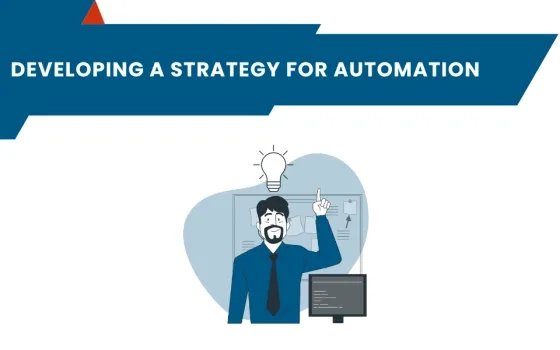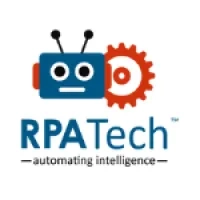Automation is a buzzword in today's business world. It promises efficiency, cost savings, and error reduction. Yet, approaching automation is not a simple task. It requires careful planning and strategic thinking.
This article aims to guide you through the first step to approaching automation. We will delve into the intricacies of conducting a thorough needs assessment. This is a crucial step in identifying processes suitable for automation. Stakeholder engagement is another key aspect we will explore. Setting clear objectives for your automation process is also vital.
We will discuss the importance of process mapping in visualizing your automation strategy. The selection of appropriate automation tools and technologies will also be covered. We will outline the steps for developing an automation roadmap. By the end of this article, you will have a comprehensive understanding of how to get started with automation.
Understanding Automation in the Business Context
Automation, in a business context, is the use of technology to perform manual tasks. These tasks, traditionally done by humans, are transferred to machines or software. The goal is to increase efficiency and reduce errors. But automation is not just about replacing human labor. It's about optimizing processes and improving productivity. It's about freeing up human resources for more strategic tasks. Automation can bring numerous benefits to a business. These include cost savings, increased speed, and improved accuracy.
However, it's not a one-size-fits-all solution. Different businesses have different needs and processes. Therefore, the approach to automation should be tailored to each business.
Here are some key benefits of automation:
But automation also comes with challenges. These include the cost of implementation and potential job displacement. There's also the risk of over-automation, where processes become too rigid. And there's the challenge of integrating new technologies with existing systems.
Here are some common challenges of automation:
Understanding these benefits and challenges is crucial. It helps businesses make informed decisions about automation. It also helps them develop a strategic approach to automation. This is the first step to approaching automation effectively.
The Imperative of Strategic Planning in Automation
Strategic planning is crucial in automation. It helps businesses identify their automation needs. It also helps them set clear objectives for their automation initiatives. Without a strategic plan, automation efforts can be misguided. They can lead to wasted resources and missed opportunities.
Strategic planning starts with a thorough needs assessment. This involves identifying the processes that are suitable for automation. It also involves assessing the potential impact of automation on the workforce.
The next step is to set clear objectives for automation. These objectives should be aligned with the overall business strategy. They should also be measurable and achievable.
Here are some common objectives of automation:
Once the objectives are set, the next step is to develop an automation roadmap. This roadmap outlines the steps to achieve the automation objectives. It also includes a timeline and a budget for the automation initiatives. The roadmap should be flexible and scalable. It should be able to accommodate changes in business needs and technologies.
Finally, the strategic plan should include a monitoring and evaluation mechanism. This mechanism helps businesses measure the success of their automation initiatives. It also helps them identify areas for improvement and make necessary adjustments. Strategic planning, therefore, is not a one-time activity. It's an ongoing process that requires continuous monitoring and adjustment. This is the key to successful automation.
Identifying Processes Suitable for Automation
Identifying the right processes for automation is a critical step. Not all processes are suitable for automation. Some processes may be too complex or too unique to be automated. Others may not yield significant benefits when automated. So, how do you identify the right processes for automation?
Here are some characteristics of processes that are suitable for automation:
Once you have identified the processes that are suitable for automation, the next step is to prioritize them. This involves assessing the potential benefits and challenges of automating each process.
Here are some factors to consider when prioritizing processes for automation:
The goal is to start with the processes that can yield the most significant benefits with the least challenges. This approach helps businesses achieve quick wins and build momentum for their automation initiatives. It also helps them learn and gain experience before tackling more complex processes.
Once the processes are prioritized, the next step is to map them out. This involves documenting the steps involved in each process. It also involves identifying the inputs, outputs, and decision points of each process. Process mapping helps businesses understand their processes better. It also helps them identify opportunities for improvement and automation.
In conclusion, identifying and prioritizing processes is a critical step in the automation journey. It helps businesses focus their automation efforts where they can yield the most significant benefits. It also helps them avoid the pitfalls of automating the wrong processes.
Engaging Stakeholders and Setting Clear Objectives
Engaging stakeholders is a crucial part of the automation process. Stakeholders can provide valuable insights and feedback. They can also help identify potential challenges and opportunities.
Stakeholders include employees, managers, customers, and suppliers. They also include IT professionals, business analysts, and decision-makers.
Here are some tips for engaging stakeholders in the automation process:
Setting clear objectives is another critical step in the automation process. Objectives provide a clear direction for the automation initiatives. They also provide a basis for measuring the success of the initiatives. Objectives should be specific, measurable, achievable, relevant, and time-bound (SMART). They should also align with the overall business strategy. For example, an objective could be to reduce the time taken to process customer orders by 50% within six months. Or it could be to reduce the error rate in invoice processing by 80% within a year.
Once the objectives are set, they should be communicated to all stakeholders. This helps ensure that everyone is on the same page and working towards the same goals. In conclusion, engaging stakeholders and setting clear objectives are critical steps in the automation process. They help ensure that the automation initiatives are well-planned, well-executed, and well-received.
Conducting a Thorough Needs Assessment: The First Step
The first step to approaching automation is conducting a thorough needs assessment. This involves identifying the needs and requirements of the organization. It also involves identifying the processes that are suitable for automation. A needs assessment helps ensure that the automation initiatives are aligned with the needs and goals of the organization.
Here are some steps to conduct a needs assessment:
-
Identify the needs: Identify the needs of the organization in terms of efficiency, accuracy, speed, and customer service.
-
Identify the processes: Identify the processes that are repetitive, time-consuming, error-prone, and critical to the business.
The needs assessment should involve all relevant stakeholders. This includes employees, managers, IT professionals, and decision-makers. It also includes customers and suppliers, as they can provide valuable insights and feedback. The needs assessment should be conducted in a systematic and structured manner. It should be based on data and evidence, rather than assumptions and opinions. The needs assessment should also be documented and communicated to all stakeholders. This helps ensure transparency and buy-in from all stakeholders.
Once the needs assessment is completed, the next step is to develop a strategy for automation. This involves selecting the right automation tools and technologies. It also involves developing a roadmap for the implementation of the automation initiatives. The strategy should be aligned with the needs and goals identified in the needs assessment. It should also be flexible and scalable, to accommodate changes and growth in the organization.
In conclusion, conducting a thorough needs assessment is the first step to approaching automation. It helps ensure that the automation initiatives are well-planned, well-targeted, and well-executed. It also helps ensure that the automation initiatives deliver the desired benefits and outcomes.
In the next section, we will discuss the concept of process mapping and its relevance to automation.
Process Mapping: Visualizing the Automation Strategy
Process mapping is a crucial step in developing a strategy for automation. It involves creating a visual representation of the processes that are to be automated. This helps in understanding the flow of tasks, the roles involved, and the dependencies between tasks. Process mapping helps in identifying bottlenecks, inefficiencies, and redundancies in the process. It also helps in identifying opportunities for improvement and automation.
Here are some steps to create a process map:
The process map should be clear, concise, and comprehensive. It should accurately represent the current state of the process. It should also be validated by the people who are involved in the process. Once the process map is created, it can be used to design the automation strategy. This involves identifying which tasks can be automated and which tasks should remain manual. It also involves identifying the automation tools and technologies that are best suited for each task.
The automation strategy should be designed to enhance the efficiency, accuracy, and speed of the process. It should also be designed to improve the quality of the outputs and the satisfaction of the customers.
In conclusion, process mapping is a powerful tool for visualizing the automation strategy. It helps in understanding the process, identifying opportunities for automation, and designing the automation strategy.
In the next section, we will discuss the selection of appropriate automation tools and technologies.
Selecting the Right Automation Tools and Technologies
Choosing the right automation tools and technologies is a critical step in the automation process. The choice of tools and technologies can significantly impact the success of the automation initiative. There are many factors to consider when selecting automation tools and technologies. These include the nature of the tasks to be automated, the complexity of the process, and the skills of the workforce.
Here are some key considerations:
The selection of tools and technologies should be based on a thorough evaluation of their features, benefits, and limitations. It should also be based on a comparison of different options available in the market. The selection process should involve the key stakeholders, including the IT team, the process owners, and the end-users. The selected tools and technologies should be tested through a pilot program before full-scale implementation. This helps in identifying any issues or challenges and addressing them before they impact the entire process.
In conclusion, selecting the right automation tools and technologies is a critical step in the automation process. It requires careful consideration of various factors and a thorough evaluation of different options.
In the next section, we will discuss the development of an automation roadmap and a pilot program.
Developing an Automation Roadmap and Pilot Program
Once the right automation tools and technologies have been selected, the next step is to develop an automation roadmap. This roadmap serves as a strategic plan that outlines the sequence of steps to be taken to implement automation.
The roadmap should include the following elements:
The development of the roadmap should involve all the key stakeholders. This ensures that everyone is on the same page and that the roadmap is aligned with the overall business strategy. Once the roadmap has been developed, the next step is to implement a pilot program. A pilot program is a small-scale implementation of the automation process. It serves as a test run to identify any issues or challenges before the full-scale implementation. The pilot program should be carefully monitored and evaluated. This allows for any necessary adjustments to be made before the process is rolled out on a larger scale.
In conclusion, developing an automation roadmap and a pilot program is a critical step in the automation process. It ensures that the implementation is well-planned and that any potential issues are identified and addressed early on.
In the next section, we will discuss how to measure the success of automation initiatives and how to scale them.
Measuring Success and Scaling Automation Initiatives
The success of an automation initiative is not just about implementing the technology. It's about achieving the objectives set out in the automation roadmap. To measure success, it's important to establish key performance indicators (KPIs). These KPIs should be aligned with the objectives of the automation initiative.
They could include metrics such as:
Regular monitoring and evaluation of these KPIs is crucial. It helps to identify any issues or challenges and to make necessary adjustments. Once the success of the automation initiative has been established, the next step is to scale it. Scaling involves expanding the automation process to other areas of the business. This should be done in a phased manner, starting with the areas that are most likely to benefit from automation. Scaling also involves continuously improving and optimizing the automation process. This can be achieved through regular monitoring, evaluation, and feedback.
In the next section, we will conclude by discussing the future of automation and how businesses can embrace it.
Conclusion: Embracing the Future of Automation
As we have seen, automation is not a one-size-fits-all solution. It requires careful planning, strategic thinking, and a clear understanding of the business processes. The first step to approaching automation is conducting a thorough needs assessment. This helps to identify the processes that are suitable for automation. It also helps to engage stakeholders and set clear objectives for the automation initiative.
The selection of the right automation tools and technologies is also crucial. These tools should be scalable, flexible, and compatible with the existing IT infrastructure. Developing an automation roadmap and implementing a pilot program can help to test the effectiveness of the automation process. Measuring the success of the automation initiative is also important.
This can be done by monitoring key performance indicators and making necessary adjustments. Once the success of the automation initiative has been established, it can be scaled to other areas of the business.
The future of automation is promising. With advancements in artificial intelligence and machine learning, automation is becoming more sophisticated and efficient. However, it's important to remember that automation is not about replacing humans. It's about augmenting human capabilities and freeing up time for more strategic and creative tasks. Embracing automation is not just about adopting new technology. It's about transforming the way we work and creating a more efficient, productive, and innovative business.













